Answer just a few questions and we'll have you matchedwith your perfect Companion Robot!Click now for your FREE custom report!
How Humanoid Robots Are Transforming Autism Therapy: A Comprehensive Guide
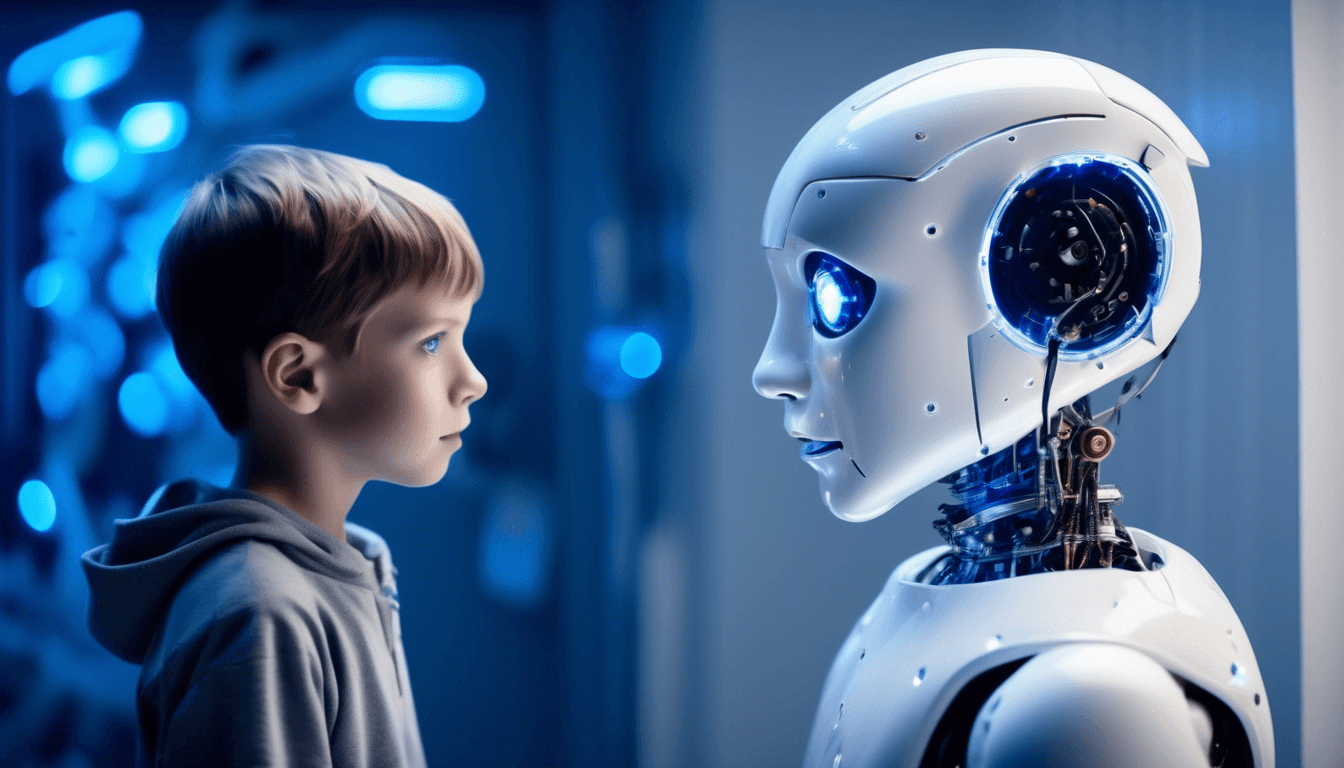
Understanding How Humanoid Robots Are Revolutionizing Autism Therapy
For children with autism spectrum disorder (ASD), traditional therapy methods can sometimes feel overwhelming. Enter the game-changing world of humanoid robots – our new high-tech friends that are transforming how we approach autism therapy.
The Rise of Robot-Assisted Therapy
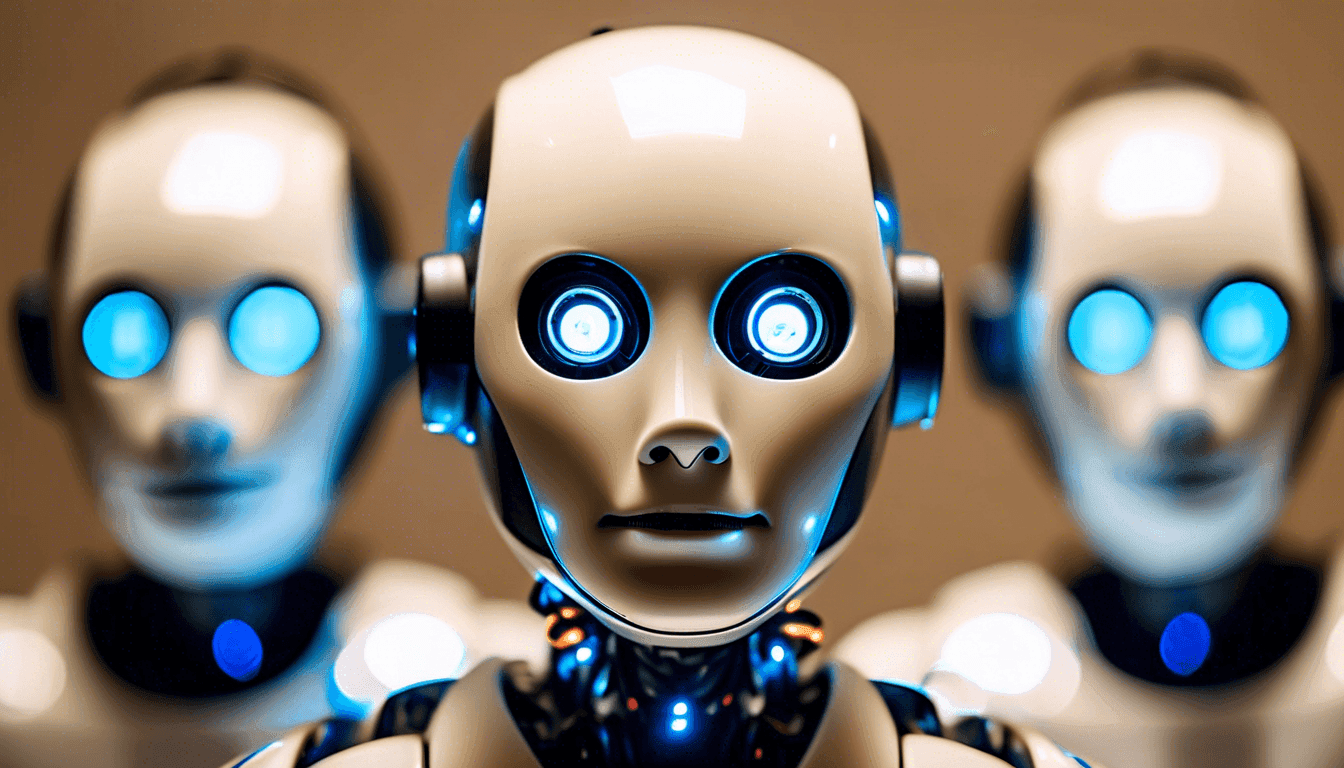
Remember when robots were just cool toys in sci-fi movies? Well, now they’re becoming valuable therapeutic tools. Humanoid companion robots for autism therapy are making waves in clinical settings, and for good reason. These sophisticated machines offer consistent, predictable interactions that many children with ASD find comforting.
Research from MIT’s Media Lab shows that children with autism often engage more readily with humanoid robots than with human therapists. It’s not that robots are better therapists – they’re just less complicated from a social perspective.
Why Robots Work So Well
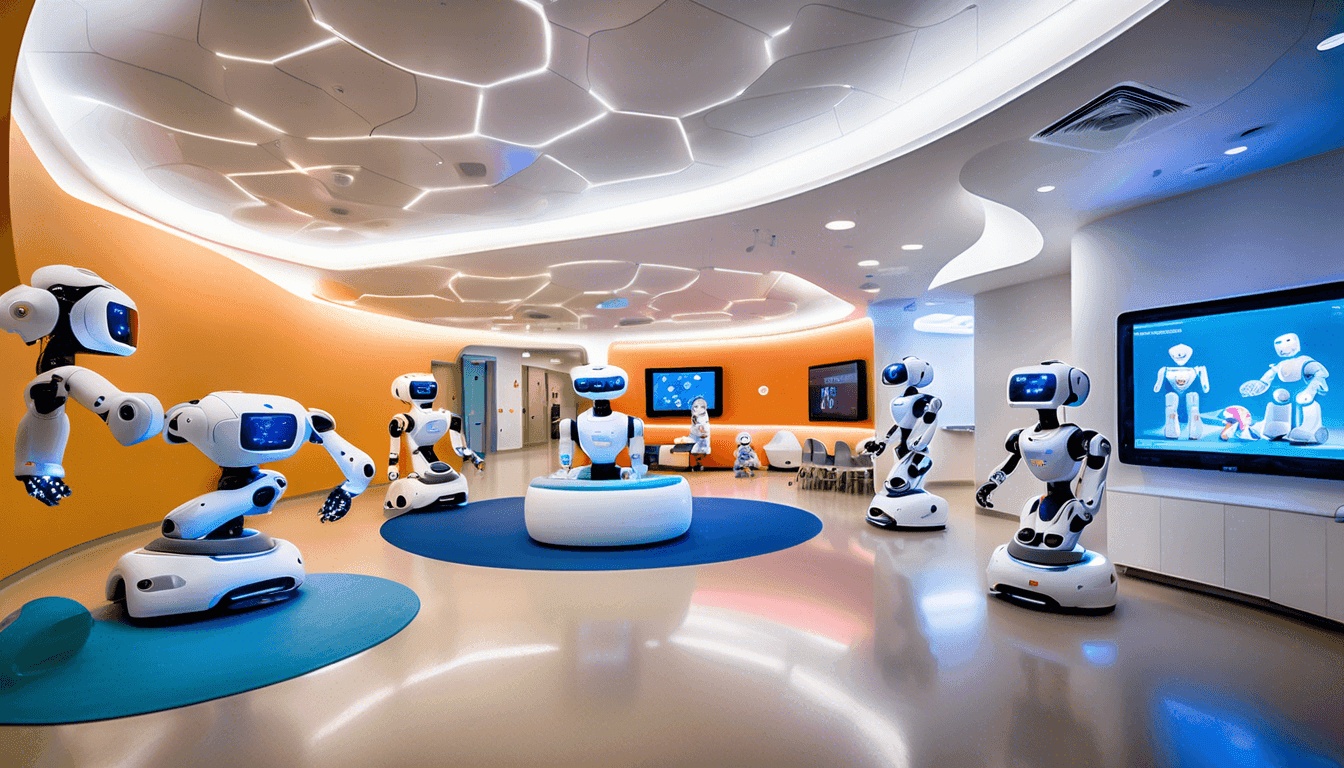
Here’s what makes humanoid robots particularly effective in autism therapy:
• Predictable responses
• No complex facial expressions to decode
• Endless patience
• Consistent behavior
• Reduced social anxiety
Studies by the Yale Child Study Center found that children with ASD showed a 30% increase in social engagement when interacting with humanoid companion robots compared to traditional therapy methods.
Key Benefits of Robot-Assisted Therapy

Improved Social Skills
When working with humanoid robots, children with autism often demonstrate:
• Better eye contact
• Increased verbal communication
• Enhanced turn-taking abilities
• More frequent social initiations
Emotional Recognition Training
Humanoid robots can help teach emotional recognition in a controlled, systematic way. They can:
• Display clear, consistent emotional expressions
• Repeat scenarios without fatigue
• Gradually increase complexity
• Provide immediate feedback
For insight into the intersection of robotics and emotional learning, explore this study from Frontiers in Robotics and AI on social robots in educational and therapeutic contexts.
Communication Development
The Journal of Autism and Developmental Disorders reports that children working with humanoid companion robots show significant improvements in:
• Vocabulary development
• Conversation skills
• Non-verbal communication
• Speech clarity
Popular Humanoid Robot Models in Therapy
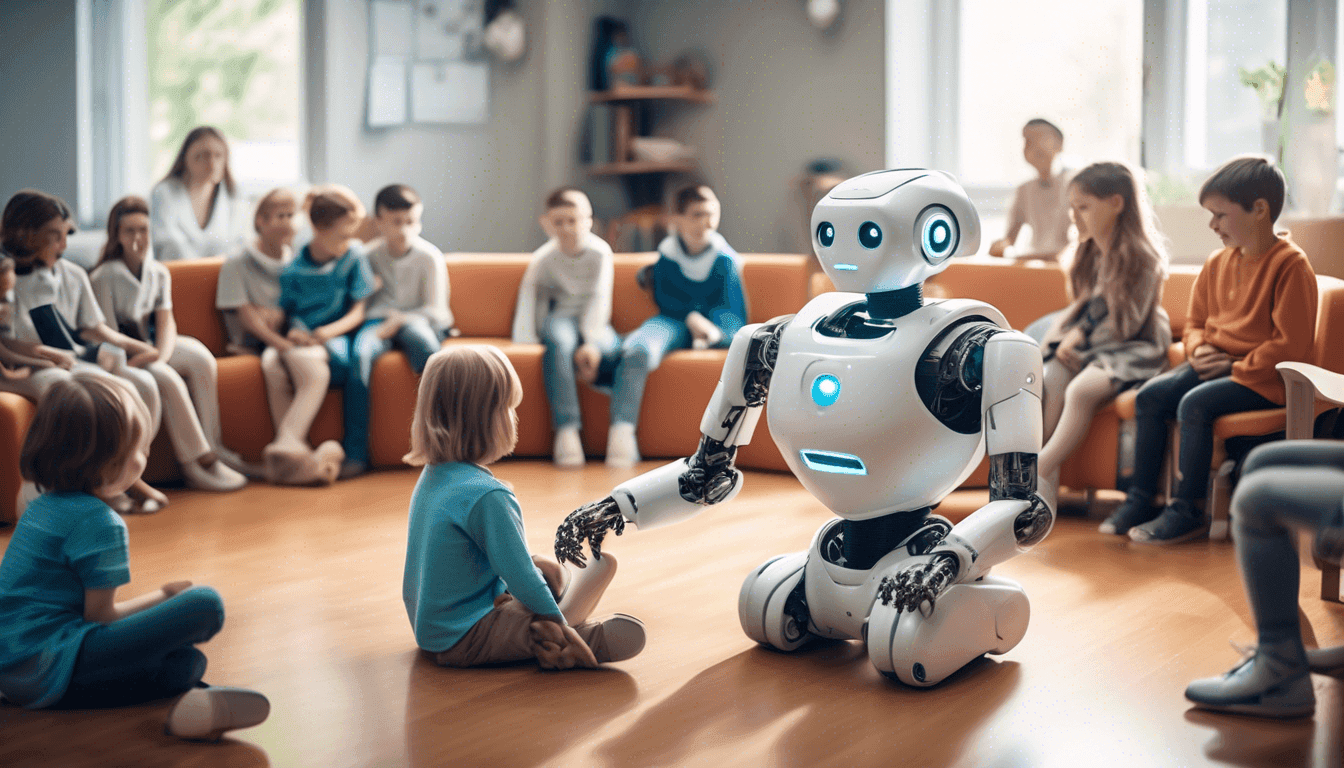
Several humanoid robots are making a difference in autism therapy:
Robot Name | Key Features | Best Used For |
|---|---|---|
NAO | Programmable movements, speech recognition | Social skills training |
Kaspar | Simplified facial features, customizable responses | Emotional recognition |
QTrobot | Touch sensors, expressive LED face | Communication development |
Implementation Strategies
Getting the most out of humanoid robot therapy requires a structured approach:
- Initial Assessment
- Evaluate child’s current abilities
- Set specific therapy goals
- Choose appropriate robot model
- Customized Programming
- Adjust robot responses
- Set interaction parameters
- Create personalized scenarios
- Progressive Integration
- Start with simple interactions
- Gradually increase complexity
- Monitor and adjust as needed
Real-World Success Stories
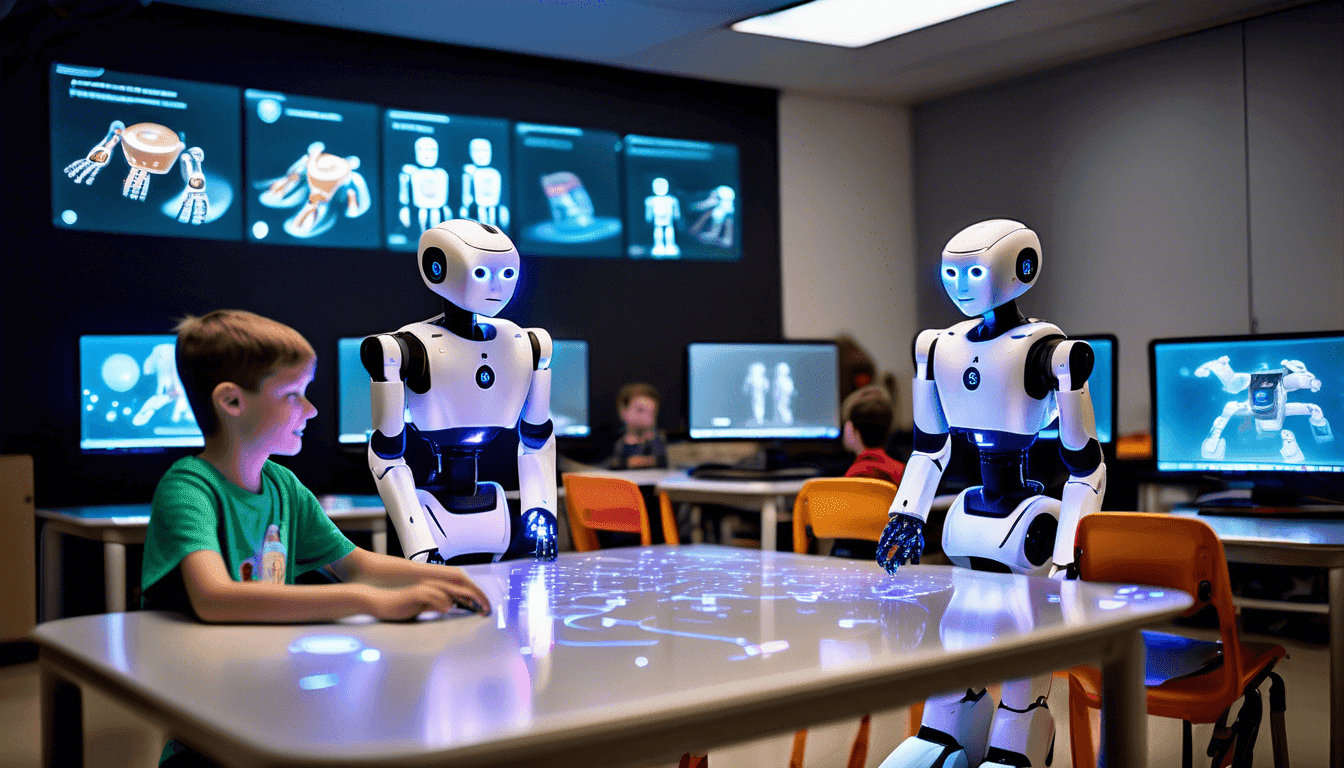
Take Tommy, age 7, who struggled with making eye contact. After six weeks of working with a humanoid robot, his teachers reported a 40% increase in eye contact during regular classroom interactions. The predictable nature of the therapy interactions helped him build confidence in social situations.
Challenges and Considerations
Let’s keep it real – robot therapy isn’t perfect. Here are some things to consider:
• Cost (these little helpers aren’t cheap)
• Technical limitations
• Need for trained operators
• Integration with traditional therapy methods
The Future of Robot-Assisted Therapy
The field of humanoid robots in autism therapy is evolving rapidly. Researchers at Stanford’s AI Lab predict that next-generation robots will feature:
• More sophisticated emotional recognition
• Advanced adaptive learning capabilities
• Better natural language processing
• Improved motor skills
To understand how AI might influence these advancements, check out our overview of smart robot voice recognition capabilities.
Making the Choice
If you’re considering humanoid robot therapy, ask these questions:
• What specific challenges does your child face?
• What therapy goals are you targeting?
• Is there a qualified provider in your area?
• How will robot therapy complement existing treatments?
Getting Started
Ready to explore humanoid companion robots for autism therapy? Here’s your action plan:
- Consult with therapy professionals
- Research available programs
- Observe a session if possible
- Start with short, structured sessions
- Monitor progress consistently
Remember, humanoid robots aren’t replacing human therapists – they’re enhancing the therapeutic toolkit. Think of them as high-tech teaching assistants, helping bridge the gap between traditional therapy and the unique needs of children with autism.
By combining the consistency of humanoid robots with the empathy of human therapists, we’re opening new doors in autism therapy. And that’s something worth getting excited about! For more inspiring applications, take a look at how social robots are also supporting dementia care.



